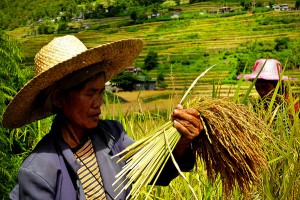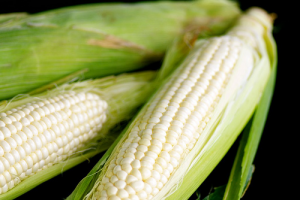 QUEZON CITY, July 22 – The production and consumption of other food staples that are eaten in combination with rice is also a priority of the Aquino administration, aside from increasing rice production to achieve food security, the Department of Agriculture said Tuesday.
QUEZON CITY, July 22 – The production and consumption of other food staples that are eaten in combination with rice is also a priority of the Aquino administration, aside from increasing rice production to achieve food security, the Department of Agriculture said Tuesday.
Under its Food Staples Sufficiency Program (FSSP), the DA has equally focused on increased productivity for white corn, cassava, sweet potato (camote), adlai and plantain (saba banana), thereby improving access of Filipinos to affordable staples, besides rice. The Department has also extensively campaigned for responsible rice consumption and the substitution of rice with other staple carbohydrate sources such as white corn grits and adlai.
With better productivity, the DA expects increased incomes of small farmers and farm workers, addressing food security and poverty among staples producers. 
With the FSSP and other complementary programs, the country has enjoyed a historical best in palay production, reaching a national production all-time high of 18.97 million metric tons in 2014.
And while rice production has improved, the DA-Bureau of Agricultural Statistics (now part of the Philippine Statistics Authority) reported that per capita consumption of rice has decreased by about 11 percent from 128 kilogram per person per year in 2008 to 114.26 kilograms per person per year in 2012.
 In 2013, the Philippines was also cited by the United States Department of Agriculture as the world’s fastest-growing rice producer. This enabled the country to achieve a 96.8 percent sufficiency level from 81.2 percent in 2010, when the country had the distinction of being the world’s largest rice importer.
In 2013, the Philippines was also cited by the United States Department of Agriculture as the world’s fastest-growing rice producer. This enabled the country to achieve a 96.8 percent sufficiency level from 81.2 percent in 2010, when the country had the distinction of being the world’s largest rice importer.
With increased production, the price of rice has become more resistant to inflation. For the 2010−2014 period, rice had registered an average of 3.7 percent inflation rate, lower than the 4.6 percent increase in food prices and the country’s overall inflation rate. This has come with the decline in the National Food Authority’s debt from Php175 billion in 2010 to Php155 billion in 2013. 
Corn production, on the other hand, has also registered a consistent increase over the last four years. With the growth trajectory, the DA predicts that corn production may even surpass the historic-high 2012 production of 7.407 million metric tons.
Gawad Saka 2014 Outstanding Corn Farmer Eulogio ‘Toti” Cabiles from San Manuel, Tarlac said that farmers like him have improved their yield and income with the DA’s continuous assistance, from irrigation to proper application of fertilizers and use of seeds suitable to their locality, among others.
“For the last four years, we have maintained a steady production growth trajectory, and we expect this to be sustained even after our term,” DA Secretary Proceso Alcala said.
Alcala attributes these achievements with reforms in the agency. He recalled that in 2010, the Aquino administration inherited a Department of Agriculture under investigation for anomalous mass procurement of fertilizers and seeds. 
“With the administration’s good governance platform, we eliminated bulk procurement of farm inputs that has caused widespread skepticism on the government. Instead, we enshrined farmers’ choice in the selection of agriculture suppliers and rolled out the Food Staples Sufficiency Program as a comprehensive strategy for enhanced agricultural productivity, particularly on staples,” Alcala said.
The Secretary added that under the principle of accountability, the DA has carefully crafted responsive programs such as the FSSP to ensure that public funds are efficiently spent to realize two important goals of agricultural development—food security and reduction of rural poverty.
Alcala also credits the agriculture stakeholders in the success of the programs. (JPD, DA-AFID)







